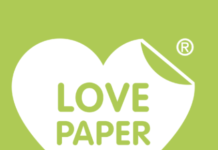When you think about learning, typically you envision students at their desks putting pencil to paper, or listening to a teacher in the front of the classroom. However, today there are a variety of tools that support learning and literacy.
Around the world at an increasingly rapid pace, new classroom learning methods and tools, including digital technology, are being adopted. Interestingly, current research reports that there are are learning and retention limitations to engaging digital technology in the classroom and as a studying tool when compared to pencil and paper.
Two Sides has compiled some eye-opening facts about learning and literacy that demonstrate why print, paper and pencil remain highly effective learning tools. From handwriting, to reading, to comprehension and retention, print, paper and handwriting deliver proven benefits and continue to play an essential role in education and development.
The facts:
• Having a wide range of writing skills – from the basic production of letters, shapes and numbers to quality handwriting has been positively linked to academic performance.
• Students who read texts in print scored significantly better on the reading comprehension test than students who read the texts digitally.
• [Two Sides Summary] For young children, the development of handwriting is a complex task requiring the coordination of several cognitive, motoric and neuromotor processes and recent evidence suggests that writing by hand in the early years supports the development of reading skills.
• Fine motor writing skills in preschool were consistently stronger predictors of reading and math achievement than fine motor manipulation tasks.
• Elementary students who write by hand are found to write more quickly, produced longer pieces, and wrote more complete sentences than those who do not and handwriting strengthens fine motor skills in young students.
• When children composed text by hand, they not only consistently produced more words more quickly than they did on a keyboard, but expressed more ideas. And brain imaging in the oldest subjects suggested that the connection between writing and idea generation went even further. When these children were asked to come up with ideas for a composition, the ones with better handwriting exhibited greater neural activation in areas associated with working memory — and increased overall activation in the reading and writing networks.
• Children remembered more details from stories they read on paper than ones they read in e-books enhanced with interactive animations, videos and games.
• Millennials overwhelmingly said they prefer paper. In fact, 60 out of 66 students preferred paper to computer when studying. Even though it is thought that this generation of students may have adapted to new technology, nearly everyone expressed a preference for paper, usually saying they felt they performed better when reading on paper rather than a screen.
• [Two Sides Summary] Laptops are commonplace in university classrooms and one of their drawbacks is that they offer distractions to note taking. Research on the effects of in-class laptop use on student learning showed that multitasking on a laptop poses a significant distraction to both users and fellow students and can be detrimental to comprehension of lecture content.
• [Two Sides Summary] Studies that compare the efficiency and effectiveness of print vs. paperless reading typically agree that print has key advantages. Print readers:
• Read more quickly.
• Experience less mental fatigue.
• Report significantly lower levels of eye fatigue following reading.
• Find it easier to concentrate.
• Retain more of what they read.
• Score better on reading comprehension tests.





















